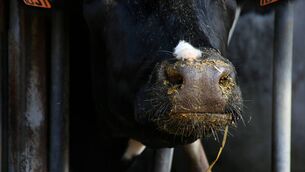Risks and responsibilities
In many cases, the contracts achieved were at least €20 per tonne more than the subsequent harvest price.
This eased financial burdens on farms early on in the cropping year, and “defused” potentially volatile harvest markets.
Forward selling of oilseed rape and grain is becoming more popular here in Ireland also, as more farmers take responsibility for managing financial risks into their own hands.
In the case of oilseed rape, early marketing via forward contracts has been the norm for large scale continental farmers for many years.
Their rule of thumb is to market 30% of the crop after sowing it, another 30% in the spring when it is evident how the crop stands have come through the winter, and the rest during the harvest — or later, if the price trend is appropriate, and storage facilities exist.
This year, more EU wheat for the 2011 harvest was sold in advance than ever before.
Driving these forward sales were price peaks at the start of the year, when European bread wheat had risen to €280/t on the commodity futures exchange in Paris. Nevertheless, EU farmers have been relatively slow to take responsibility for managing risks in this way — one of the downsides of the EU price and market support mechanisms. But they need to change, now that markets have become more unpredictable than ever.
Climate change, tight supply-demand balances, liberalised world trading, and volatile energy prices make it harder to predict prices. Who can predict the impact of this week’s eurozone debt summit? Will consumers spend more on food, or will a stronger euro make Irish exports to Britain less competitive, and attract a greater food supply to the EU from non-euro countries? There could be particular risks there for our cattle farmers. Their counterparts in the US would hardly countenance taking on all of the significant market risk during the feeding period without considering “hedging” — taking a position in the futures market at a selling price at or above the cost of production. In the US, 74% of the variation in cattle feeding profits is due to changes in the prices of cattle and grain, only 10% is due to changing average daily gain or feed efficiency — so it is taken for granted that ranchers buy and sell cattle futures contracts. They frequently work with bankers who understand the futures markets. Here in Europe too, bankers like farmers who use grain forward contracts to secure a price, because it adds to the farmer’s credit worthiness and safeguards his cash flow. It is hoped that EU farmers will reduce risks by using a growing variety of private risk management tools in the future. There is a case for the EU to encourage the use of derivatives to cope with price volatility, by promoting training on these products, and ensuring regulation and availability of information. Such an approach could save hundreds of millions of expenditure by the EU fire brigade market support.
Selling price and yield are generally considered to be the greatest risks in agriculture. But farmers will be able to reduce these risks, if they are given the tools.












